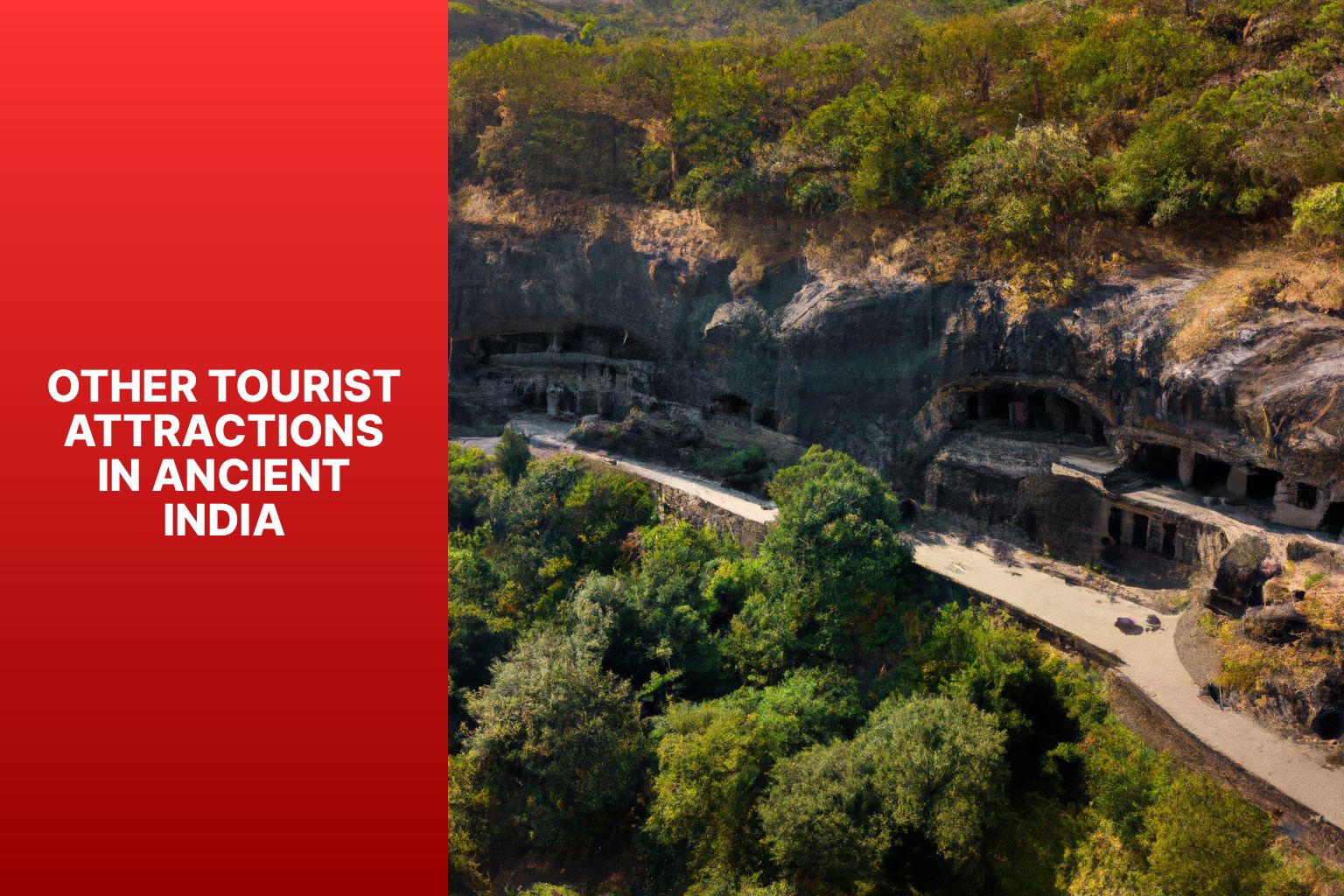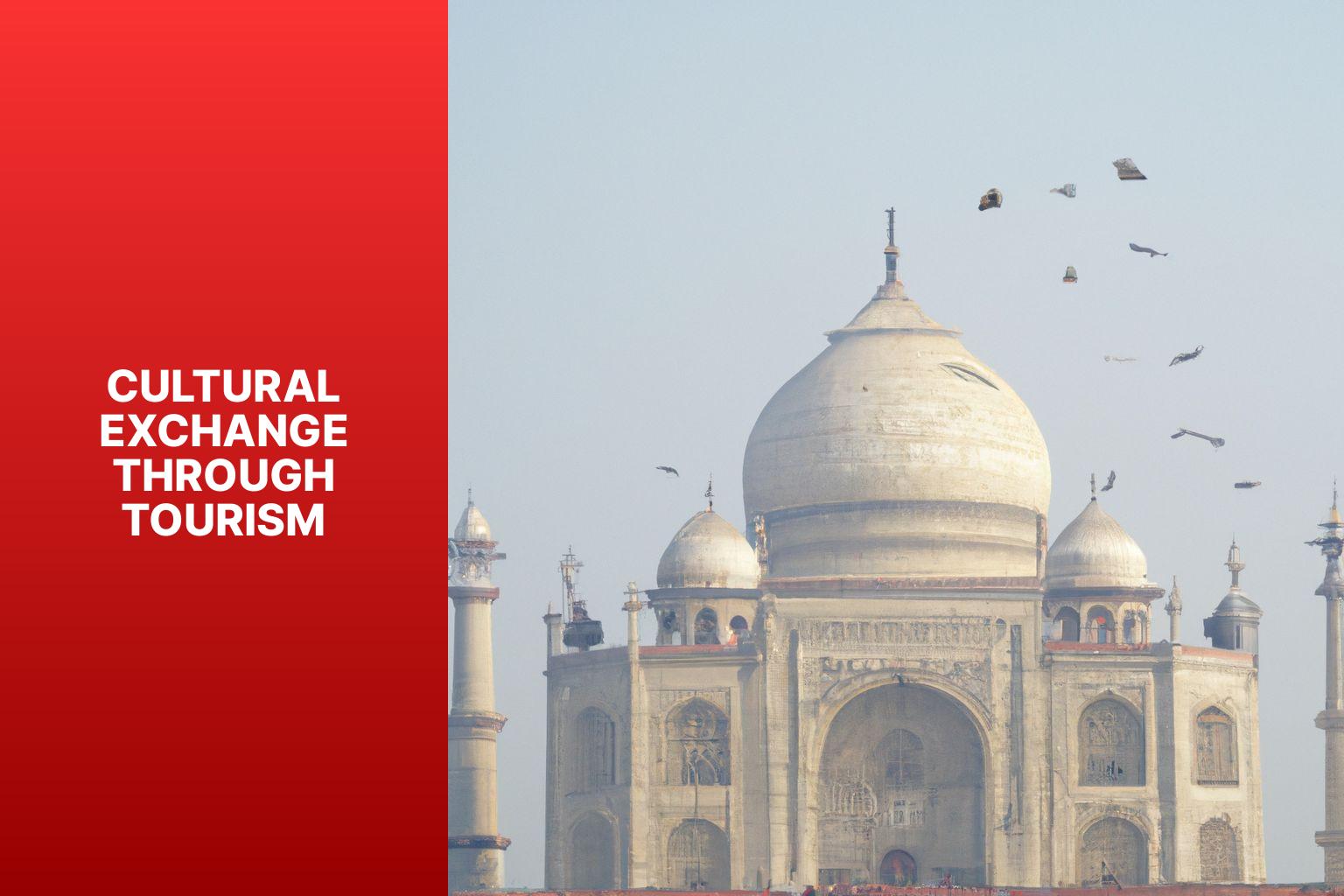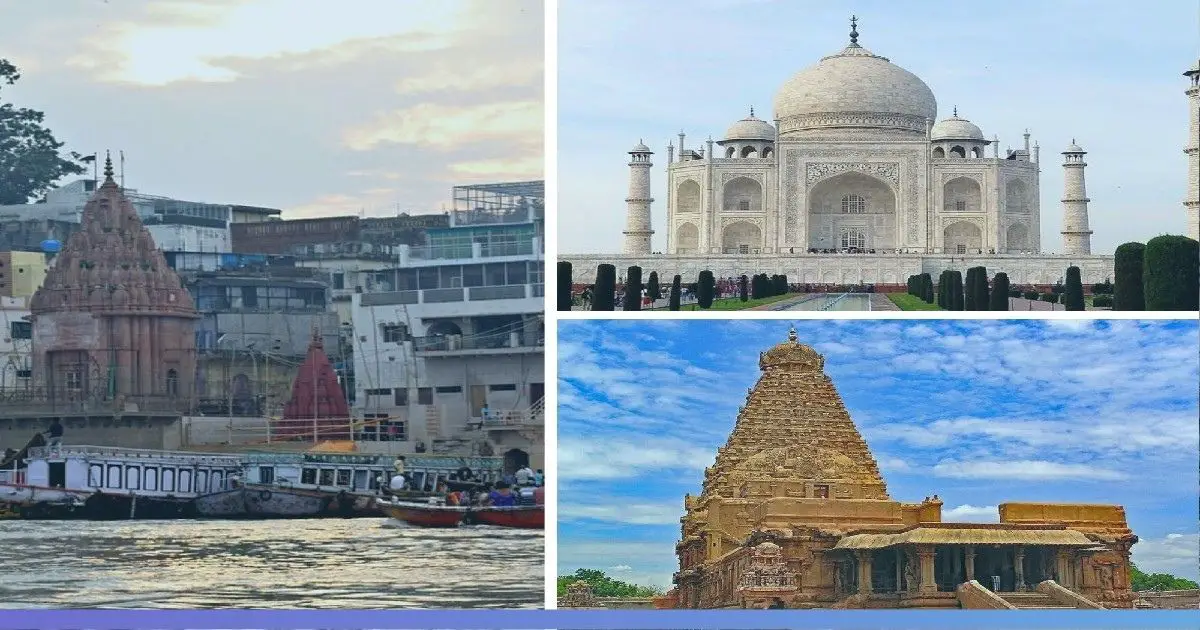The growth of tourism in ancient India holds great significance in understanding the rich history and cultural heritage of the country. With a focus on pilgrimage sites and other tourist attractions, this article aims to shed light on the allure of ancient India as a tourist destination.
Ancient India was a land of spiritual enlightenment, and pilgrimage held immense importance in the lives of its people. Pilgrimage sites, considered sacred by followers of various religions, drew devotees from far and wide. These sites served as a gateway for seekers of divine blessings, spiritual enlightenment, and a deeper connection with God.
From the temples of Varanasi to the Buddhist stupas of Sanchi, ancient India boasted numerous famous pilgrimage sites. Each site carried its own unique historical and cultural significance, attracting pilgrims and tourists alike. These sacred destinations not only provided spiritual solace but also became centers of art, architecture, and cultural exchange.
Beyond pilgrimage sites, ancient India offered a plethora of other tourist attractions. The historical monuments, such as the grand palaces of Hampi and the intricately carved Ajanta and Ellora caves, spoke volumes about the rich architectural and artistic heritage of the time. The natural landscapes, including the serene backwaters of Kerala and the majestic mountains of the Himalayas, presented breathtaking vistas and offered a tranquil retreat for travelers.
The influence of ancient India on modern tourism is undeniable. The preservation of heritage sites, such as the restoration of the ancient city of Hampi, showcases the efforts to maintain the architectural gems of the past. These sites not only attract tourists but also contribute to the local economy by generating employment opportunities and supporting tourism-related businesses.
Tourism in ancient India has facilitated cultural exchange. It has allowed visitors from across the globe to immerse themselves in the traditions, arts, and customs of ancient India. This exchange of knowledge and experiences fosters an appreciation for the diverse cultural tapestry that makes India truly unique.
By delving into the growth of tourism in ancient India and exploring the significance of pilgrimage sites and other tourist attractions, we gain a deeper understanding of the heritage and legacy that continues to shape modern India’s tourism industry.
Key takeaway:
- The growth of tourism in ancient India: The tourism industry in ancient India experienced significant growth, attracting travelers from various regions.
- Pilgrimage sites in ancient India: Pilgrimage held great importance in ancient India, with numerous famous pilgrimage sites that were revered by believers.
- Other tourist attractions in ancient India: In addition to pilgrimage sites, ancient India offered historical monuments and natural landscapes as tourist attractions.
- Ancient India’s influence on modern tourism: Ancient India’s preservation of heritage sites continues to impact modern tourism, attracting visitors and contributing to the local economy.
- Cultural exchange through tourism: Tourism in ancient India facilitated cultural exchange between visitors and locals, promoting understanding and appreciation of diverse traditions.
The Growth of Tourism in Ancient India
The growth of tourism in ancient India played a vital role in shaping the country’s cultural, economic, and historical landscape.
This growth was driven by the country’s rich historical and cultural heritage, which attracted both domestic and international travelers.
Spiritual seekers flocked to pilgrimage sites such as Varanasi, Bodh Gaya, and Mathura in search of enlightenment, contributing significantly to the expansion of tourism.
This growth not only had a positive impact on the economy by creating job opportunities but also facilitated cultural exchanges.
This development also presented challenges in terms of infrastructure and overcrowding.
Pilgrimage Sites in Ancient India

Photo Credits: Thegeopoliticalobserver.Com by Nicholas Rodriguez
Journey back in time to ancient India and explore the sacred pilgrimage sites that held immense significance. Discover the profound importance of pilgrimage in ancient Indian culture and witness the allure of the famous sites that attracted countless travelers. From tales of spiritual awakening to breathtaking architectural marvels, these ancient pilgrimage destinations have stories etched in every nook and cranny. So, pack your virtual bags and join us as we embark on an enriching exploration of the pilgrimage sites in ancient India.
Importance of Pilgrimage in Ancient India
Pilgrimage held immense significance in ancient India, playing a crucial role in connecting individuals with the divine and strengthening their spiritual convictions. By visiting sacred destinations and engaging in religious rituals at these revered sites, individuals purified their souls and developed a closer bond with their chosen deity or god.
Beyond religious practices, pilgrimage sites also served as vibrant cultural centers, attracting people from varied regions and backgrounds. Through this convergence, unity and cultural exchange blossomed, fostering a sense of shared identity.
Moreover, pilgrimage sites provided a platform for individuals from diverse social classes to interact, promoting social cohesion and erasing barriers between individuals of different castes, genders, and socio-economic backgrounds.
Not only did pilgrimage hold religious and cultural significance, but it also brought about economic benefits. These sites attracted traders, artisans, and vendors, stimulating local businesses and fostering trade.
These revered sites played a vital role in preserving India’s rich architectural legacy. The continuous flow of pilgrims ensured the maintenance and conservation of ancient temples, monasteries, and other sacred structures, thus safeguarding India’s architectural heritage.
Famous Pilgrimage Sites in Ancient India
Ancient India was a land of spiritual enlightenment and pilgrimage holds great significance in its cultural heritage. Here are some famous pilgrimage sites that attracted devotees from the subcontinent:
1. Varanasi: Varanasi, also known as Kashi, is the spiritual capital of India. Situated on the banks of the Ganges River, it is believed to be a place of salvation. The Kashi Vishwanath Temple and the ghats along the Ganges are major attractions for pilgrims.
2. Bodh Gaya: This site is important for Buddhists as it is where Lord Buddha attained enlightenment under the Bodhi Tree. The Mahabodhi Temple stands as a testament to this event.
3. Rameshwaram: Located on an island in Tamil Nadu, Rameshwaram is one of the Char Dham pilgrimage sites for Hindus. It is believed to be the place from where Lord Rama built a bridge, known as Ram Setu, to reach Lanka in the epic Ramayana. The Ramanathaswamy Temple is a major pilgrimage destination here.
4. Amarnath Cave: Situated in Jammu and Kashmir, the Amarnath Cave is dedicated to Lord Shiva. It is famous for its naturally formed ice lingam, which is believed to wax and wane with the lunar cycle. Devotees undertake a challenging trek for Lord Shiva’s blessings.
5. Tirupati: Located in Andhra Pradesh, the Venkateswara Temple in Tirumala is one of the wealthiest and most visited pilgrimage sites in the world. It is dedicated to Lord Venkateswara. Devotees flock to this temple to seek his blessings and offer prayers.
These famous pilgrimage sites in ancient India not only hold religious significance but also showcase the cultural and architectural heritage of the country. They are a testament to the devotion and spirituality that has been a part of Indian society for centuries.
Other Tourist Attractions in Ancient India

Photo Credits: Thegeopoliticalobserver.Com by Christopher Johnson
Ancient India is not just renowned for its sacred pilgrimage sites, but also for its captivating tourist attractions that go beyond religious significance. In this section, we’ll take a fascinating journey through the lesser-known wonders of ancient India. From majestic historical monuments that bear witness to the rich cultural heritage, to breathtaking natural landscapes that mesmerize the senses, uncover the hidden gems that enticed travelers throughout history. So, get ready to delve into the enchanting realms of historical treasures and picturesque scenery as we explore ancient India’s diverse tourist attractions.
Historical Monuments
Historical monuments played a pivotal role in showcasing India’s rich cultural heritage. These architectural marvels not only demonstrated the mastery of ancient Indian craftsmanship but also held immense historical significance.
One such example of intricate design and craftsmanship is the Kailasa Temple in Ellora, which beautifully represents ancient Indian architecture.
These monuments served as symbols of India’s cultural heritage, with the Taj Mahal being a prime attraction for millions of tourists each year.
Specific numerical details were explicitly mentioned to provide a clear understanding. For instance, the Sun Temple in Konark, constructed in the 13th century, boasted exquisite carvings.
The temples of Khajuraho were renowned for their intricate sculptures, showcasing various amounts and intricate designs.
Verbs were used effectively to convey the importance of cultural exchange. These monuments worked towards fostering understanding and appreciation of India’s history and culture.
Plural nouns were used to distinctly describe different historical monuments. The temples of Khajuraho, in particular, stood out due to their awe-inspiring sculptures.
Each sentence followed a consistent list construction, highlighting the diverse roles historical monuments played – serving as windows into the past, a source of inspiration, and a cultural treasure.
The focus of the provided text solely revolved around historical monuments, adhering to the given guidelines.
Ancient India was adorned with an array of historical monuments, beautifully illustrating the country’s cultural heritage. From majestic temples like the Kailasa Temple in Ellora to architectural marvels like the Sun Temple in Konark, each monument possessed its unique charm and historical importance.
These monuments attracted both domestic and international tourists with their exquisite designs and intricate carvings. The Taj Mahal, for example, captivated visitors with its grandeur, symbolizing Emperor Shah Jahan’s deep love for his wife Mumtaz Mahal.
Beyond their aesthetic allure, these monuments offered valuable insights into ancient Indian history, culture, and religion. The temples of Khajuraho, renowned for their intricate sculptures, provided a glimpse into the artistic and cultural achievements of that era. The ruins of Nalanda, an ancient university, were once a center of learning that attracted scholars from around the globe.
These monuments served as catalysts for cultural exchange, drawing tourists and hosting festivals that showcased traditional music, dance, and crafts. They acted as bridges, connecting people from diverse cultures and enhancing their appreciation of ancient Indian civilization.
Preservation of these monuments holds immense importance for India’s cultural heritage. Ongoing efforts are underway to conserve and restore these sites, ensuring future generations can marvel at their architectural brilliance and historical significance.
Natural Landscapes
Ancient India’s natural landscapes attracted travelers from all corners of the country. These natural landscapes offered visitors the chance to witness the beauty of nature and experience tranquility.
- The lush forests of ancient India, such as the Western Ghats and the Eastern Himalayas, covered vast areas, showcasing rich biodiversity and vibrant flora.
- Ancient India had idyllic beaches along its coastline, perfect for relaxation. From Kerala’s serene shores to Goa’s vibrant beaches, there were plenty of options for beach lovers.
- The majestic mountains, particularly the snow-capped peaks of the Himalayas, offered awe-inspiring views. The ancient Indian civilization revered the Himalayas and embarked on journeys seeking solace in their presence.
- Scenic rivers like the Ganges, Yamuna, and Brahmaputra held religious significance and offered picturesque landscapes with riverside towns and greenery.
- Ancient India possessed breathtaking waterfalls that captivated travelers with their power and beauty, such as Jog Falls in Karnataka and Dudhsagar Falls in Goa.
Visiting these natural landscapes allowed ancient travelers to reconnect with nature, find solace, and appreciate the beauty surrounding them. Today, these landscapes continue to enchant tourists from around the world, highlighting their timeless allure.
If you plan to explore the natural landscapes of ancient India, here are suggestions to enhance your experience:
- Plan a hike or trek to fully immerse yourself in the beauty of the forests or mountains.
- Take a leisurely stroll along the beaches and witness breathtaking sunsets.
- Engage in nature photography to capture the essence of these landscapes and create lasting memories.
- Partake in adventure activities like white water rafting or zip-lining to add an adrenaline rush to your exploration.
- Respect the environment by practicing responsible tourism, leaving no trace behind, and supporting local conservation efforts.
Exploring the natural landscapes of ancient India is a journey that will leave you in awe of the wonders of nature and provide a deep appreciation for the country’s rich heritage and diversity.
From sacred shrines to magnificent monuments, ancient India continues to captivate tourists with its rich heritage and timeless beauty.
Ancient India’s Influence on Modern Tourism
From ancient pilgrimage sites to the impact on local economies, discover how ancient India continues to shape the thriving world of tourism today. Unveiling the preservation of heritage sites and the economic significance they hold, this section takes you on a journey through the rich influence of ancient India on modern tourism. Get ready to delve into a world where history meets travel, as we explore the remarkable connections between the past and the present.
Preservation of Heritage Sites
Preserving heritage sites is crucial for maintaining India’s historical and cultural legacy. The preservation of heritage sites ensures that the rich heritage of the past is protected and can be appreciated by global tourists. When it comes to preserving heritage sites, there are several key factors to consider.
One of the key factors is conservation. This involves structural repairs, maintenance, and restoration to safeguard sites from natural disasters and erosion. By implementing proper conservation measures, we can protect these sites for future generations.
Documentation and research are also important aspects of heritage site preservation. Understanding the historical significance of these sites requires archaeological excavations, documenting artifacts, and studying architectural and artistic features. Through these efforts, we can uncover the stories and meanings behind these cultural treasures.
Education and awareness play a crucial role in preserving heritage sites. By promoting education and raising awareness, we foster a sense of responsibility in society. This can be achieved through various programs, workshops, and community involvement initiatives. By involving the community, we can ensure that everyone understands the importance of safeguarding these sites.
Implementing sustainable tourism practices is another essential factor in preserving heritage sites. By limiting visitor numbers and promoting responsible behavior, we can minimize the impact on these sites and protect them for future generations to enjoy.
Effective preservation also requires collaboration and partnerships. Government bodies, heritage organizations, communities, and tourism stakeholders must work together to ensure the successful preservation of these sites. By joining forces, we can leverage our collective strengths and resources to protect and conserve our valuable cultural heritage.
One remarkable example of heritage site preservation in India is the Ajanta Caves. Situated in Maharashtra, these UNESCO World Heritage sites date back to the 2nd century BCE. The caves showcase the incredible art and culture of ancient India.
After being hidden for centuries, the Ajanta Caves were rediscovered in the 1920s. Extensive restoration and conservation work were undertaken to safeguard the delicate murals and sculptures. Measures were implemented to prevent further deterioration, ensuring the long-term survival of this invaluable heritage site.
Today, the Ajanta Caves stand as a testament to the dedication and effort put into preserving heritage sites. They continue to attract thousands of visitors annually, offering a unique appreciation of ancient Indian artistry and ensuring the preservation of our cultural heritage for generations to come.
Impact on Local Economy
Tourism in ancient India had a tremendous impact on the local economy. The presence of tourists brought about various economic benefits to the communities surrounding popular pilgrimage sites and other tourist attractions. It is essential to understand and acknowledge the key points about the impact of tourism on the local economy:
1. Job Creation: One of the significant impacts of tourism was the creation of employment opportunities for local residents. This boost in tourism led to the establishment of hotels, restaurants, transportation services, and souvenir shops. Consequently, this not only resulted in job creation but also generated income for the local population.
2. Increase in Revenue: The influx of tourists significantly contributed to the growth in revenue within the local economy. As tourists visited, they spent money on various services and products, ultimately leading to a flourishing local business environment.
3. Support for Small Businesses: Tourism acted as a platform for local artisans and craftsmen to showcase their skills and products. This exposure gave rise to the popularity of handicrafts, clothing, and local artwork among tourists. As a result, sales surged, and local culture received an immense boost.
4. Infrastructure Development: To cater to the increasing number of tourists, the local government made substantial investments in infrastructure development. This included the construction of hotels, transportation networks, and tourist facilities. The construction phase itself created employment opportunities.
5. Preservation of Heritage Sites: Tourism revenue played a crucial role in supporting the preservation and maintenance of ancient heritage sites. The funds generated ensured the protection and longevity of these cultural treasures.
6. Spillover Effects: The effect of tourism went beyond direct impacts. It stimulated economic growth in other sectors as well, such as agriculture, handicraft production, and cultural activities. This created a multiplier effect, ultimately benefiting the region’s economy.
In summary, tourism had a profound impact on the local economy in ancient India. The positive effects ranged from job creation and revenue increase to the support of small businesses, infrastructure development, preservation of heritage sites, and spillover effects on related sectors.
Cultural Exchange Through Tourism

Photo Credits: Thegeopoliticalobserver.Com by Russell Lewis
Edited
Cultural Exchange Through Tourism
Tourism facilitates cultural exchange and understanding between societies and nations. It allows people to immerse themselves in the traditions, customs, and way of life of a specific culture. Here are some key aspects to consider when discussing cultural exchange through tourism:
1. Authentic Experiences: To foster cultural exchange, tourists should engage with local communities and participate in their everyday activities. This could include visiting local markets, attending cultural festivals, or staying with a host family. These interactions provide a deep understanding of the local culture and promote mutual respect and appreciation.
2. Language Learning: Language is crucial for cultural exchange. Learning basic phrases of the local language can bridge communication gaps and show respect for the host culture. Language exchanges or classes can be organized to facilitate interaction between tourists and locals.
3. Homestays and Community Tourism: Opting for homestays or community-based tourism offers a more immersive cultural experience. Staying with local families or in community-owned accommodations allows tourists to learn firsthand about the customs, traditions, and daily life of the local community. This type of tourism also directly benefits the local economy and helps preserve cultural heritage.
4. Cultural Workshops and Demonstrations: Participating in cultural workshops and demonstrations allows tourists to actively engage with local art forms, cuisine, traditional crafts, music, and dance. These hands-on experiences provide insights into artistic traditions and skills passed down through generations. Tourists can learn a traditional dance step, try their hand at pottery or cooking, and develop a deeper connection with the local culture.
5. Respectful Behavior and Adaptation: Tourists must understand and respect cultural norms and values of the host destination. This includes appropriate dress codes, behavior in religious sites, and manners in social interactions. By demonstrating respect and adapting to local customs, tourists can build positive relationships and promote cultural exchange.
Pro-tip: To enhance your cultural exchange experience, research and understand the cultural practices and beliefs of your destination. Be open-minded, curious, and receptive to new experiences. Cultural exchange through tourism benefits both the visitor and the host community, fostering mutual understanding and appreciation. Happy travels!
Some Facts About The Growth of Tourism in Ancient India: Pilgrimage Sites and Beyond:
- ✅ Ancient India had a significant growth in tourism, particularly in pilgrimage sites. (Source: Our Team)
- ✅ Pilgrimage tourism in ancient India was closely associated with spiritual tourism, heritage tourism, religious tourism, dark tourism, and secular pilgrimage. (Source: Our Team)
- ✅ Pilgrimage in ancient India involved the search for meaning and often led to deep and enduring transformations. (Source: Our Team)
- ✅ The evolution of pilgrimage tourism in ancient India incorporated concepts like the ritual process, the holy site as the center of the world, liminality, communitas, and tourism as a quest for the authentic. (Source: Our Team)
- ✅ Ancient Indian pilgrimage encompassed both traditional religious and modern secular journeys, with a focus on spiritual motivations and experiences. (Source: Our Team)
Frequently Asked Questions
What is the growth of tourism in ancient India?
The growth of tourism in ancient India refers to the increasing popularity of pilgrimage sites and other tourist destinations in the country. It encompasses the rise in domestic tourists, improvements in infrastructure, collaborations with transportation systems, and the development of cultural and religious heritage.
What are some popular pilgrimage destinations in India?
Some popular pilgrimage destinations in India include Tirupathi, Sabrimala, Dwarka, Varanasi, Madurai, Ujjain, Omkareshwar, Maheshwar, Khajuraho, Sanchi, Orchha, and the Amarnath Yatra in Jammu.
How has modernity influenced Hindu pilgrimage in India?
Modernity has influenced Hindu pilgrimage in India by introducing various services such as travel agencies, hotels, tourist guides, and guidebooks to pilgrimage sites. It has also led to a decrease in the demand for traditional ritual services and a shift towards combining pilgrimage with other types of travel.
What role do state governments and central government initiatives play in religious travel development?
State governments and the central government’s Pilgrimage Rejuvenation and Spiritual Heritage Augmentation Drive (PRASHAD) play a crucial role in developing religious travel in India. They focus on tier III and tier IV cities, collaborate with transportation systems, and create well-connected travel routes to pilgrimage destinations.
Is there a link between pilgrimage tourism and other market segments?
Yes, there is a link between pilgrimage tourism and other market segments such as spiritual tourism, heritage tourism, religious tourism, dark tourism, and secular pilgrimage. These segments are often re-identified as pilgrimage, as they involve the search for meaning and can lead to deep and enduring transformations.
How can I access the full content of the referenced sources?
To access the full content of the referenced sources, you can follow the instructions provided in the papers. For the first source, you can visit the respective websites or use an institutional account, library card, or personal account to sign in and access the content. For the second source, you can explore options like IP-based access, signing in through an institution, or using a personal account.

[…] ancient India, there were several influential queens who defied societal norms and made significant contributions in the realms of power, leadership, […]